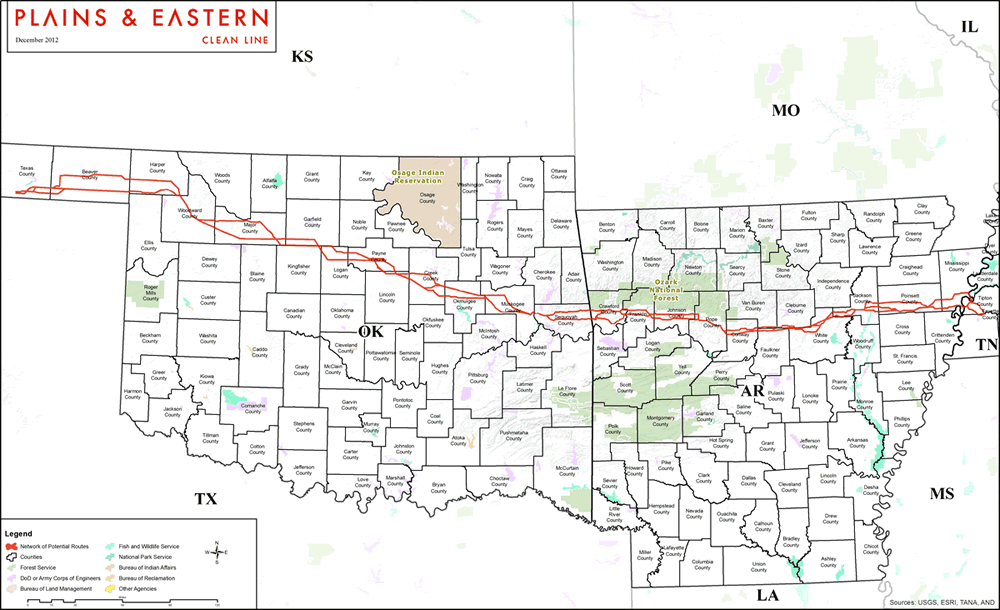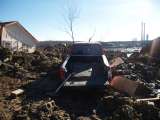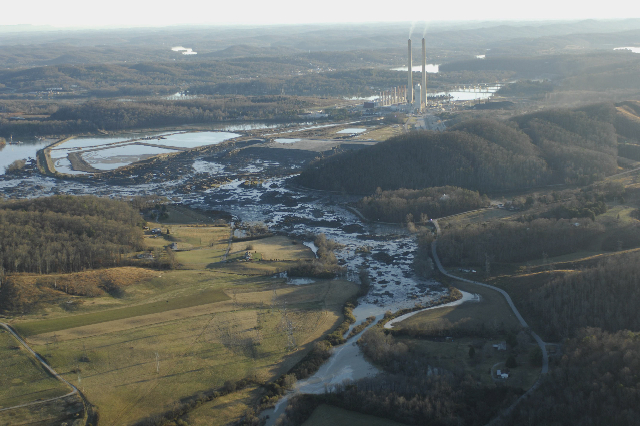Plains & Eastern Clean Line Dead?
January 24th, 2018

From Alison Milsaps and Dave Ulery, Block Plains and Eastern Clean Line:
To recap the events of recent weeks: Plains & Eastern, Clean Line’s regulatory crown jewel and the only of its projects to be fully (if questionably) permitted, is DEAD in Arkansas. Hallelujah. Don’t take our word for it, though. Let’s look at a little evidence:
Hubris: Clean Line’s Michael Skelly and the End of the Plains and Eastern Project…
You know, I love it when this happens.
Under the agreement, Clean Line Energy retains project assets east of Oklahoma, and NextEra Energy Resources owns only the project assets in Oklahoma.
Clean Line Energy added that the transaction will continue the project’s forward momentum and install a new sponsor to a transmission solution to the burgeoning wind sector in Oklahoma and the Southwest Power Pool.
A Clean Line Energy spokesperson on Dec. 22 told TransmissionHub of the deal, “We cannot disclose financial information.”
Clean Line Energy Partners, a Houston-based developer of five major transmission lines for wind-generated electricity, has dropped its interconnection agreement with TVA for one of its most promising projects after the federal utility declined to buy what Clean Line officials said would be cheaper and cleaner power for TVA…
… But after years of study, TVA said the Clean Line project didn’t make economic sense for the nation’s biggest government-owned utility, since TVA already has enough power-generating capacity and is on path to get more than half of its power from carbon-free sources. TVA President Bill Johnson said the intermittent nature of wind power would require TVA to build other backup power generators, including natural gas plants, that would offset the promised savings from the wind-generated power sources alone.
“We’re looking at a power demand in the future that is flat, or declining slightly, so we don’t anticipate needing major additions to power generation for a decade or more,” Johnson said.
“We all are wondering at this point” what is going on, said Julie Morton, of Van Buren. “We are disconnected on the western end now. The TVA was going to take 3,500 of the 4,000 megawatts it was going to generate, but now it is disconnected on that end.
“We are stuck in the middle, unplugged at both ends, and the only way out for us is if Clean Line completely implodes, which I think is happening, and the Department of Energy withdraws from the project.”
and now…
Using powers contained in the Energy Policy Act of 2005, the department moved the project forward over the objections of Arkansas leaders.
Among other things, the law would enable the use of eminent domain to obtain property from unwilling sellers.
But the participation agreement allows the department to back out of the deal if “the Commencement Date has not occurred by December 31, 2018.”
In the letter, delegation members urged Perry to “pause the Project to either study or terminate its participation before the deadline.”
Since it was unveiled, the power line project has generated controversy.
Arkansas lawmakers ask DOE to block Clean Line transmission project
Don’t know what more we could possibly need to show that this project is O. V. E. R. I do wonder if the appellate case was dismissed so there would be no precedent, and then, immediately after it was dismissed, all this happens. Then, if they or someone else wants to try a Section 1222 project, the door remains open????
Another TVA ash spill – in Alabama
January 9th, 2009
breaking news, more later…
Here it is in Huffington Post:
Here we have in in the Tennessean:
Second TVA coal ash pond ruptures
By ANNE PAINE • Staff Writer • January 9, 2009
Alabama environmental officials were on their way as of 10:15 a.m.
Central Time to an spill at TVA’s Widows Creek coal-fired power plant in
northeastern Alabama.TVA confirmed an ash-related spill at a second TVA plant, this time at
its Widows Creek plant in northeastern Alabama.“I had heard that that’s the case,” confirmed Barbara Martocci, TVA
spokesman who was at the Kingston plant in Tennessee.Scott Hughes, spokesman for the Alabama Department of Environmental
Management said, “The only thing we’ve got right now is that there was a
release from a gypsum treatment operation.”“We do understand that some of the material has reached Widows Creek.”
The creek from which TVA’s coal burning plant gets its name, crosses the
plant property. Gypsum is one of the byproducts when special filters
capture and treat ash. It can be sold for use in wallboard, but markets
have been slow and it like more standard ash can build up in waste ponds.“We’re in the process of gathering more info and getting a full report.”
Kingston is the scene of a TVA ash pond that ruptured: Early on the
morning of Dec. 22, more than a billion gallons of sludge flowed out of
the pond, damaging a dozen homes and creating environmental havoc along
the Emory River.The Widows Creek Fossil Plant is located on Guntersville Reservoir on
the Tennessee River. It has eight coal-fired units and was completed in
1965. The plant consumes about 10,000 tons of coal a day. The ash from
that coal was in the pond that broke there.
TVA Coal Ash Dike Inspection 2008
January 6th, 2009
Regarding the TVA coal ash slide on December 23 — this report wandered into my inbox today, and for inquiring minds, here’s the:
Kingston Fossil Plant Annual Ash Pond Dike Stability Inspection 2008
You’ll see some problematic areas highlighted in yellow. Check this out!
TVA coal ash — we had our own slide here in MN
January 5th, 2009
Today’s STrib has an article about Minnesota coal ash piles, prompted by the TVA coal ash disaster in Tennessee. Seems Minnesota regulators have been sleeping at the switch — the three ash piles in dikes “classified as dams” in Minnesota are supposed to be inspected every eight years, and there are “no” records of inspections for two out of three. NONE. Not good odds. The three sites in Minnesota are at Xcel’s Sherco plant in Becker, MP’s Boswell in Cohasset and Laskin Energy Center in Hoyt Lakes (remember Hoyt Lakes? Where the Mayor testified “We’re used to mercury here.” Uh-huh…).
Thanks to the STrib for reporting on this:
The STrib’s “yes it CAN happen here, yes it HAS happened here” heads up on Minnesota’s own prior coal ash disaster, spilling all over Highway 61 and into Lake Superior:
The disaster highlights the concerns over disposal of coal ash, which has been a worry in Minnesota because of the risk of groundwater contamination. The Tennessee ash slide also is reminiscent of a July 1993 mishap on Minnesota’s North Shore, in which a rain-soaked coal ash heap crashed down the hillside.
…
Fly ash is known to become unstable when saturated with water. It happened 15 years ago on the North Shore of Lake Superior, when a 27-acre ash heap at a former LTV Steel power plant turned into uncontrollable sludge after heavy rain. About half of the heap crashed down the hillside, covering part of Hwy. 61 near Taconite Harbor and knocking out an electric substation. Some reached the lake, and the land cleanup cost the company $11 million, said Jeff Stollenwerk of the Pollution Control Agency.
Needless to say, Minnesota’s coal ash slide went to court:
Here’s the court’s description of what happened:
Between 1957 and June 1982, LTV and Cliffs (collectively LTV) deposited waste ash, generated by LTV’s plant, on an ash heap located uphill from UPA’s facility. The heap consisted of approximately 770,000 cubic yards of waste ash, covering approximately 27 acres. When the contract was agreed to, much of the ash heap was covered with top soil, grass, legumes, and new growth trees.
In March 1991, LTV applied to the Minnesota Pollution Control Agency (MPCA) for a permit to resume depositing ash on the heap. The MPCA investigated and determined that the deposits could be polluting Lake Superior through rain and other water run-off. The MPCA issued a “no discharge” requirement, ordering LTV to stop the release of water from the ash pile.
LTV had several options for compliance, including placing a clay cover over the ash pile or hauling away the water from the ash pile. Instead, LTV opted to construct a containment and recirculation system, consisting of a large pond on the downhill side of the ash heap to collect surface runoff and leachate water. Water was pumped from the pond to the top tier of the ash heap, sprayed back onto the heap, and dispersed by “evapotranspiration”; i.e., evaporation of water through the vegetation covering the ash pile. This system was approved by the MPCA.
LTV also hauled excess water from a coal stockpile and dumped the water into the pond or directly onto the ash heap. The level of water in the ash heap was increased by above normal rainfall in July 1993. On July 28, 1993, the ash heap became saturated and liquified (a rare phenomenon called “static liquefaction”). A large part of the ash heap collapsed, and a mixture of ash and water flowed downhill, causing damage to UPA’s facilities.
For damages resulting from the ash slide, UPA recovered $509,345.38 from its casualty insurer, Hartford Steam Boiler Inspection and Insurance Company. Hartford brought this subrogation action against LTV on theories of negligence, trespass, nuisance, and strict liability. LTV denied liability and affirmatively alleged that an act of God (the above-normal July rainfall) caused the ash heap’s collapse.
The result in the case? Mixed:
The insurer of an electrical cooperative brought this subrogation action against mining companies to recover payments for property damage caused by the collapse and liquification of a large ash heap. The district court ruled that an exculpatory clause in a contract with the electrical co-op exonerated the mining companies from strict liability but was unenforceable because it violated public policy. We affirm the construction of the exculpatory clause but reverse the determination that the exculpatory clause violated public policy. We also affirm the inapplicability of the act of God defense, and we remand for further proceedings to determine whether the mining companies are liable for willfully causing the damage.
TVA coal ash slide – UPDATES
December 27th, 2008
The only good news in this is that the media is picking this up, it’s not going to be “disappeared.”
From the “field” or from the slime, muck & yuck, here are updates. Special thanks to United Mountain Defense, John Walthen, Nicholas Mann, Tom Swinford, Chris Irwin, Donna Lisenby, Dot Griffith, and all those doing tremendous work getting the word and pictures out (whose names haven’t shown up in the emails I’ve received). This is a clear example of the importance of the internet.
Here’s from The Tennessean:
Would you believe 5.4 million cubic yards? Can you even imagine that?
A video from the scene by people taking water samples on the Emory River:
There is a great collection of photos on Photobucket:
A general view of the devastation, being downplayed by TVA and the coal industry:
Here you can watch the cops clearing out the area (at the end), can’t have this showing up on YouTube, don’t cha know:
And this photo by Dot Griffith puts it all together:



